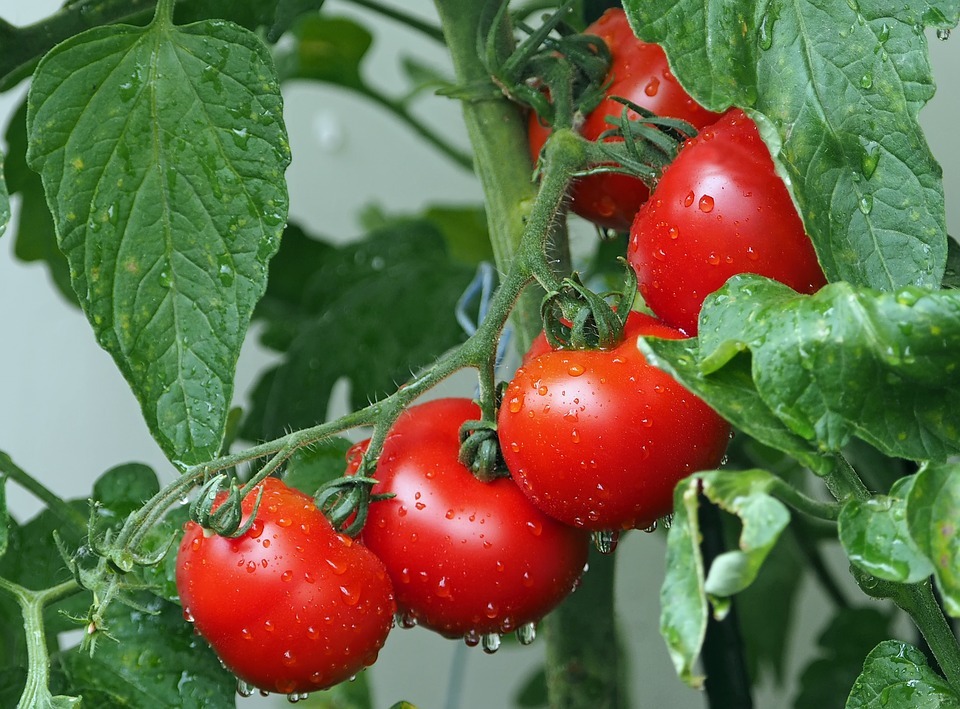Tomatoes are a good source of vitamin C, which helps you to prevent colds. The more tomato you eat, the better you are protected against colds and flu. This is because vitamin C strengthens your immune system.

Read : Propagating Methods For Growing Oregano and Other Herbs
There are many different types of tomatoes that have different tastes, and you can enjoy a whole variety of them. How much sunlight does a tomato plant require? How can you tell if your tomato plant is getting too much or not enough light? Let’s get answers to all your tomato-growing questions.
There are some tomatoes that can adapt to direct sunlight. But you must remember that they may need more water during summer time.
Light requirement for tomatoes
One of the more interesting findings from the study was that light levels were just fine for growing tomatoes as long as you provided ample irrigation, fertilization, and regular watering. At higher light levels, the plants grew more slowly. But even though the plant growth rate slowed, the tomatoes still produced a healthy crop at the end of the season.
What happens when tomatoes get too much sun?
Tomato leaves get sunburned because the chemicals in tomato leaves called anthocyanins protect the tomato plant from ultraviolet light. Anthocyanins also protect fruit from pests and disease. But too much ultraviolet light causes leaves to develop a red color that is an indication of the plant’s exposure to ultraviolet light. When this happens, the anthocyanin levels drop.
Tomato plants are often exposed to sunlight at times that damage their leaves. Leaves are sensitive organs, and if exposed to too much light, they get sunburned and discolored. So the plants will usually wilt or start to turn yellow. As a result, growers have to prune back tomato plants to keep them from getting too much sun. This is one example of the ways in which growing practices can influence quality.
Can tomatoes grow in indirect sunlight?

Tomatoes are sun loving plants that require at least six hours of direct sunlight every day to produce at their peak. But if you plant them under a tree or in a shady spot, they won’t grow nearly as fast as they would in full sunlight. On the other hand, they won’t grow at all if there is no light at all.
Tomatoes need a lot of light, and while a plant will take the minimum amount of light necessary to keep it alive, it needs more light than that to reach its full potential. So, the bottom line: If your tomatoes are unhappy, put them in the full sun. If your tomatoes are thriving, move them out of the full sun.
Tomatoes require direct sunlight for maximum growth and development. Make sure that your plants have enough room and light, but are not exposed to extreme temperatures.
When growing tomatoes in your garden, it’s important to provide them with the right type of artificial lighting for growth.
Tomatoes can also grow in indirect sunlight when they are provided with an appropriate amount of water and nutrients.
Growing tomatoes
Most people think growing tomatoes is very easy, but there are so many things that you must take into consideration before you plant a tomato seed. Can tomatoes grow in indirect sunlight?
- First, You will also need to consider the type of soil you should use for your plants. You can use regular garden soil or you can use potting soil. Regular garden soil is good enough to grow small plants. But, it may be too wet. On the other hand, potting soil is better for large plants.
- You will need to prepare your soil. You will first want to add some compost or manure to your soil. You can do this with the fertilizer that you already have or you can buy some compost. You will also want to work the compost into the soil. You should not add too much compost to the soil. If you add too much compost to the soil, you will have a problem with your tomato plants. If you don’t have enough compost, you can add more soil.
- You will also need to know how much light your plants should have. If you don’t have enough light, you will not be able to grow tomatoes. In some cases, your tomatoes might die.
- To make sure that your plants are getting enough sunlight, you can place them in a shady area. Make sure that you keep your plants away from drafts and other harsh weather.
- Remember to water them properly. The soil must always stay moist. If your soil becomes dry, it will not provide enough water for your plants to grow. A tomato plant needs about three gallons of water a week.
- The last thing to consider before you plant a tomato seed is where you want to plant it.
Conclusion
In conclusion, Tomatoes require direct sunlight to grow into a large healthy fruit. However, if tomatoes are grown in full sun, they are prone to sunburn, scorching, and other negative effects. If they are grown in indirect light, their yield increases significantly.
Tomatoes can grow in direct sunlight, too. Just make sure that you don’t let them sit in the sun too long. You can also grow them in pots. However, if you have an old, dark, dirty pot, you should change it out and put it in some sunshine. After all, you are growing vegetables, and you shouldn’t be using a rusty pot for your tomato plants.
Read : Mushroom Compost Vs. Cow Manure For Garden Soil
You should also pay attention to the water that you use for your plant. If you are watering it too much, it will be very sad. Instead, you should water it when it is dry. In addition, you should also check the soil in which your plant is growing. If it isn’t good, you can also buy new soil. It is better if you choose a brand name soil rather than buying fertilizer to use for your garden. However, you must be careful with fertilizer. Too much fertilizer can damage your plants and make them unhealthy. So, if you want to grow healthy vegetables, you should fertilize them correctly. That is all about growing tomatoes tomatoes indoors or can tomatoes grow in indirect sunlight